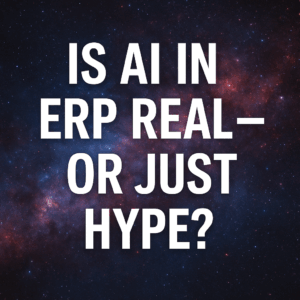Whatever the reason may be, many people overlook writing up a business case for an upcoming project. The reason could range from simply overlooking the need to the need to being so strong that justification is not necessary. Regardless of the reason why it’s important to recognize the value a business case can add to a project’s overall success rate.
Typically, the purpose of a business case is to provide a justification for a digital transformation, outlining the details of the project and ultimately determining the ROI that can be achieved by moving forward. However, a business case can and should be so much more than that. How can a business case benefit your project and add more value?
It’s important to reposition our perspective of what a business case can do. It can be much more than an initial tool for approval, and here’s how to make it as such.

- Make sure your business case is accurate and realistic.
Understanding the total cost of ownership is key. Look beyond the cost being quoted to you from prospective software vendors – will there be other costs indirectly related to the actual software integration? Some examples could be backfilling internal resources, upgrading infrastructure, hiring a third party to customize the technology. There is usually so much more behind the curtain than the original quote you will get, and it takes big-picture thinking to dial in on what it will take to see success across the board. This is the most important piece, as it will help you determine a true ROI for your project.
- Identify the benefits your company will experience once the project is completed.
Evaluate what the right technology can do for your organization. There are incredible benefits that come from successfully implementing a new ERP System, and it’s important to gauge what would be applicable to your company. If you are in the manufacturing industry, you could cut costs through inventory reduction and transparency into everything from raw materials to production statuses. If you’re in sales, the right system could help you close more business and drive top-line revenue growth for the company.
There are also many intangible benefits to integrating new systems ranging from enhanced customer experience to increased employee retention due to new transparency and simplicity across the organization.
- Provide project governance across through the full transformation.
This element of a business case is oftentimes the most overlooked segment, and arguably one of the most important. Of course, we all will set goals and objectives, but approaching this piece as pillars that will aid in future decision making is key. Somewhere along the line of the project, an Executive or other team members will want to make a change to the original plan – may be adding a new module, customizing a segment of the software, etc.
If your business case has well-defined goals and objectives, then it can act as a guide for business decisions along the way. Anytime there are questions or new ideas that pop up swaying the original direction of the project, the business case can act as a consultant to drive decisions to make sure the deviations are aligned with the end goal. If the requested change supports the objectives of the project, then maybe you should pursue it. If it doesn’t, then don’t.
Companies that utilize a business case often see more success in their transformations than those who don’t for this reason. Project governance acts as a guardrail to keep the project from getting off course, and a business case can act as a tool and a resource to act as such.
- Align your Organizational Change Management strategy with your business case.
The framework set with the goals and objectives of the project will also speak to the right organizational change management strategy for when it comes time for go-live. How will roles be redesigned to fit the new system? Will there be portions of the business that will have to reinvent the way they operate? The areas of impact and the magnitude of organizational change should be listed in your business case. Once identified, you can utilize the business case as a roadmap to implementing new training for those departments or roles impacted by the changes and streamline the transition to be more seamless than it would be otherwise.
- Incorporate a benefits realization plan.
Dialing in on key metrics to measure the success of a project will help determine the success factors of the project. It will also create focus and accountability within the team, ensuring everyone is doing their part to support a successful IT transformation.
Recognize where you are achieving the benefits post software integration, and where you may be falling short. Understanding the areas you are falling short could help you analyze the reasoning and find the solution to turn it from red to green. It’s often simple fixes too – maybe it’s simply more training for a particular workgroup, maybe it’s reconfiguring the software to fit the need a bit better, maybe it’s simply cleaning up the data entering the system. Relatively speaking, these fixes are daily small scale and easily attainable to help close the loop on open ends of the project.
Summary
View your business case not as just a justification tool for approval of a project, but as a roadmap to success for a project. Even if you’re in the middle of a project, it will still be helpful to write up a business case. Don’t skip the step and you will be one step closer to a successful transformation.
Questions about digital transformation needs or general software implementation? Please feel free to contact us to discuss your change management or transformation initiatives. We are happy to help!





